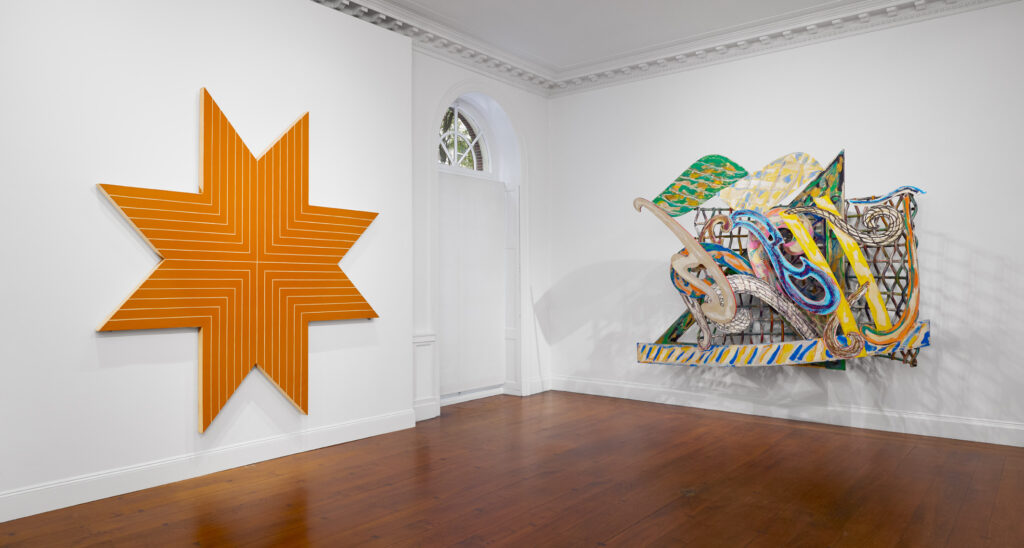
Years ago, New York Times columnist Roberta Smith wrote: “Paintings, like poetry or music, are essential nutrients that help people sustain healthy lives.” Frank Stella (1936-2024) did just that by creating works that were not just new and groundbreaking, but electrifying, audacious—like the contemporary operas by John Adams. In contrast to the popular abstract expressionism of the 1960s, Stella famously said: “My painting is based on the fact that only what can be seen there is there. It really is an object.”
The Mnuchin Gallery exhibition last fall, “Homage to Frank Stella,” commemorates both Stella’s life and artistic legacy. Since his debut in the art world at the age of 23, shortly after graduating from Princeton University (class of 1958) Stella became a luminary in the art world. Dorothy Miller, a curator at the Museum of Modern Art, invited Stella to participate in the ground-breaking exhibition “16 Americans.” At 33, he was the youngest artist ever to be given a MoMA retrospective.
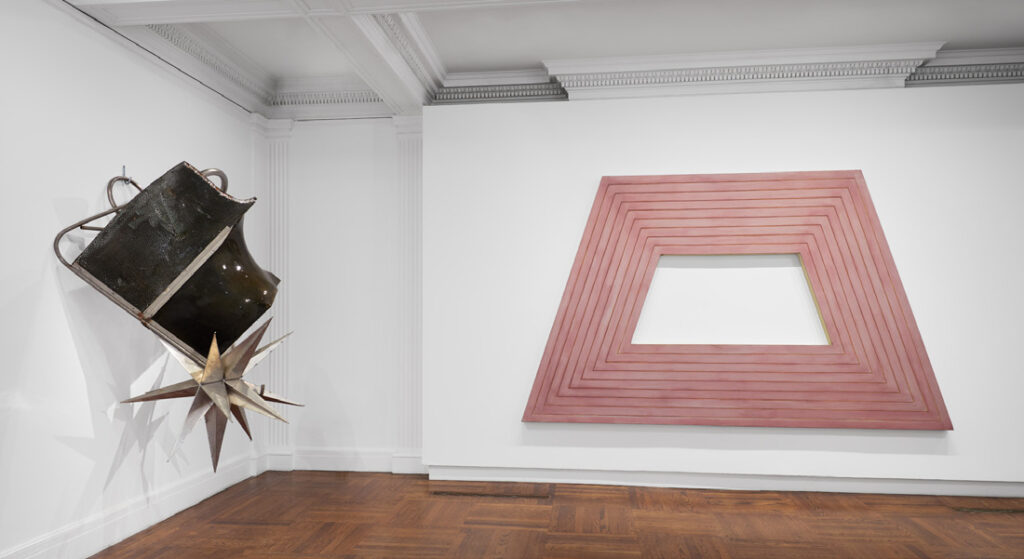
Until the end of his life at 88, Stella reinvented, redefined, and reimagined the spatial and conceptual definitions of painting, prints, and sculpture according to historian and critic Carter Ratcliff, whose catalogue accompanying the Mnuchin homage is a must-read. The illustrations as well as the text are compelling.
As the catalogue demonstrates, Stella continued to evolve throughout his life beginning with his Black, Aluminum and Copper series. One painting in the groundbreaking crisply elegant Black series is titled by the haunting words above the gate at Auschwitz (Work will Set You Free). “These foundational series would naturally evolve into the asymmetrically shaped canvases, bold colors, and geometric patterns that characterize his Concentric Squares, Protractors, and Irregular Polygons,” says Ratcliff.
The T-shaped and asymmetrically shaped canvases are among Stella’s best known works, but many other series followed as he continued to expand and challenge the idea of painting on a flat surface. In the 1970s after a visit to Ahmedabad, India, Stella completed his large scale Bird Series moving away from Minimalism to giant collage-like configurations with intricate woven forms, brilliant colors, a range of varied shapes, sizes, and surfaces.
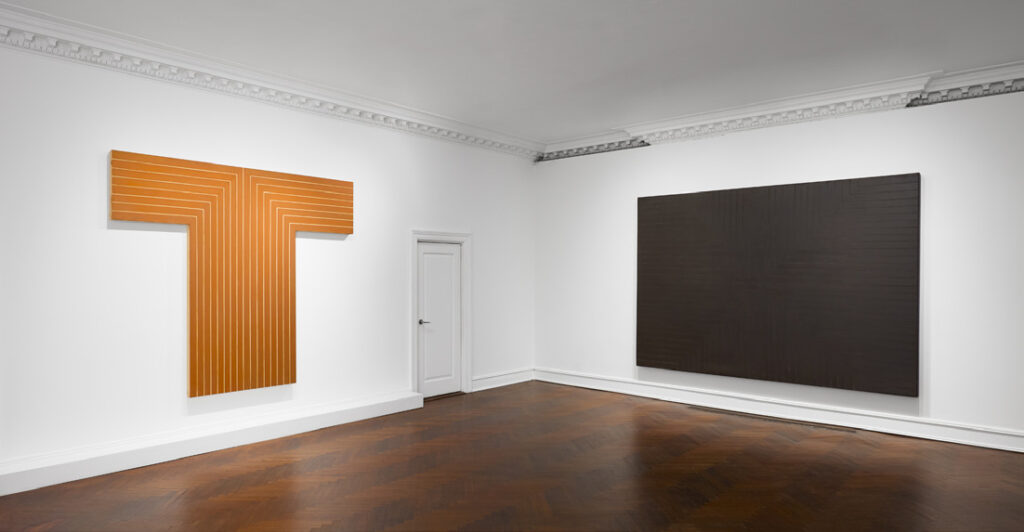
“My painting is based on the fact that only what can be seen there is there. It really is an object.”
Frank Stella was also an eminent writer. Unlike the poets and critics who preceded him, he was asked to give the distinguished Norton Lectures at Harvard University in 1983. Harvard’s surprising choice of Stella for these lectures was based on his stature as “one of the most thoughtful and visually fastidious artists to arise since the eclipse of Abstract Expressionism,” according to art critic Roger Kimbell. What is also important writes Kimball, Stella “…is one of the most verbally articulate contemporary artists to champion the cause of abstract art.” (All six fascinating lectures have been published in a book entitled Working Space available from Amazon.)

Stella’s “Star” series dominated his late career “with dynamic shapes and intricate linear constructions…” according to Ratcliff ’s catalogue. One of the most visually fascinating sculptures illustrated in the catalogue is K. 179 (2011). Ratcliff writes that it “synthesizes color, shape, and movement in a manner that poetically responds to the rhythms of Domenico Scarlatti’s sonatas.”
Dubbed “one of the most beautiful exhibitions in Manhattan last fall,” Stella’s
career was indeed stellar. Perhaps it is no coincidence that his Italian name in English means star. G&S
mnuchingallery.com Installation views of “Homage to Frank Stella” at Mnuchin Gallery, Photography by Tom Powel Imaging.

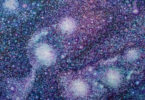
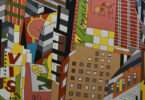

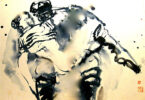
Leave a Comment